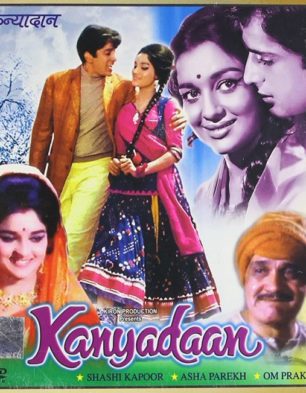“Kanyadana” is a classic Kannada film released in 1954, directed by R. Nagendra Rao, a prominent figure in Kannada cinema. The film features an ensemble cast including R. Nagendra Rao himself, along with Rajkumar, Pandari Bai, and Narasimharaju. The movie delves into the themes of marriage, familial duty, and the societal expectations placed on women, particularly in the context of the traditional Indian practice of ‘Kanyadana’ or the ceremonial giving away of a daughter in marriage.
The storyline of “Kanyadana” revolves around the central character, played by R. Nagendra Rao, who is a patriarchal figure deeply rooted in traditional values. He believes strongly in the sanctity and duty of marriage, and his life’s mission is to ensure that his daughters are married into respectable families. His character embodies the societal pressures and expectations of the time, emphasizing the importance placed on marriage as a pivotal aspect of a woman’s life.
Pandari Bai plays the role of the eldest daughter, who is the epitome of virtue, duty, and self-sacrifice. Her character is central to the film’s narrative, as she navigates the challenges and responsibilities imposed on her by her family’s expectations. Her portrayal is poignant, highlighting the emotional and social pressures faced by women during the period.
Rajkumar, in one of his early roles, plays the younger brother who is modern in his outlook and questions the traditional norms. His character represents the voice of reason and change, advocating for a more progressive approach towards marriage and the treatment of women. Rajkumar’s performance is marked by a blend of youthful energy and thoughtful introspection, adding depth to the film’s exploration of generational conflict.
Narasimharaju, known for his comedic flair, provides much-needed comic relief in the film. His character, while light-hearted, also subtly critiques the rigid societal norms and brings a fresh perspective to the otherwise serious narrative. His humor and wit help balance the film’s emotional weight, making it more engaging and accessible.
As the story unfolds, the family faces various trials, including financial difficulties and societal judgments. The father’s unwavering commitment to marrying off his daughters into respectable families leads to dramatic turns and sacrifices. The film explores the concept of ‘Kanyadana’ not just as a ritual, but as a complex interplay of love, duty, and societal expectations.
The direction by R. Nagendra Rao ensures that the film remains focused and impactful. The narrative is well-structured, with strong character development and a storyline that keeps the audience emotionally invested. The dialogues are rich with cultural context, reflecting the societal norms and familial values of the time.
The music of “Kanyadana,” composed by R. Sudarshanam, is integral to the film’s narrative. The songs are melodious and deeply connected to the emotional and cultural themes of the story. The musical score enhances the film’s atmosphere, underscoring key moments and adding to the overall emotional resonance.
In conclusion, “Kanyadana” is a significant film in Kannada cinema, remembered for its powerful exploration of traditional values, familial duty, and the societal pressures surrounding marriage. The film’s strong performances, particularly by R. Nagendra Rao and Pandari Bai, along with its thoughtful narrative and poignant music, continue to resonate with audiences, making it a timeless classic.


